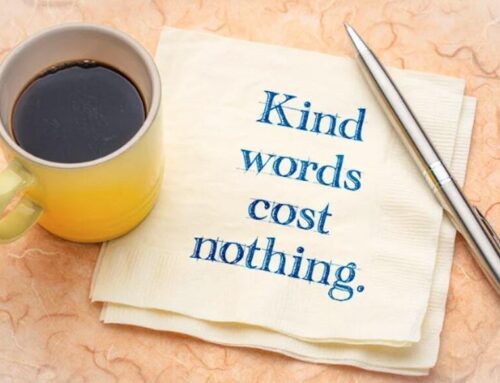
Toxic behaviors can quietly spread through a team until morale, trust, and productivity start breaking down. Whether it’s persistent gossip, passive-aggressive remarks, or someone constantly undermining others, you’ve likely seen how one person’s actions can affect an entire group. If you’re wondering how to handle toxic employees, the first step is learning to recognize the signs before the damage becomes systemic.
Identifying Toxic Employees
When workplace conflict becomes chronic or emotionally charged, it’s often tied to one or two individuals whose behavior consistently disrupts team function. Recognizing these patterns early is essential for anyone involved in conflict analysis, human resources, or organizational conflict management.
Common Traits of Toxic Behavior
Toxic employees show up in different ways, but their behaviors usually follow a set of predictable patterns. Unfortunately, some toxic patterns fly under the radar for too long because managers don’t know what to look for, and employees might be afraid to say anything and end up avoiding conflict.
If you want to foster a positive work culture, identifying toxic behavior is one of the first steps. These behaviors often interfere with conflict resolution, undermine inclusive leadership, and make it harder for team members to work toward mutual understanding. Some of the most common traits of toxic employees include:
- Chronic Negativity: You may encounter some employees who always expect the worst and voice it constantly. Their outlook discourages open communication and makes resolving conflicts a lot more difficult, especially when the entire team begins adopting the same mindset.
- Blame Shifting: Toxic employees usually try to avoid accountability by blaming other people for their mistakes, even when it’s clear they were responsible. This erodes trust, disrupts the resolution process, and creates friction among the parties involved.
- Defensiveness to Feedback: When toxic employees are presented with constructive input, they shut down, argue, or deflect. It becomes challenging to grow leadership skills or maintain a productive work environment when feedback isn’t received openly.
- Disrupting Team Collaboration: Whether through interrupting, refusing to participate, or undermining others, this behavior blocks healthy problem-solving. Team members can struggle to engage when the group dynamics consistently get thrown off balance by the toxic team members.
- Isolation Coupled With Passive Resistance: Some employees disconnect from the team and quietly resist change or group decisions. While the conflict might register as low impact at first, it limits inclusive leadership and can end up escalating unresolved conflicts behind the scenes.
- Manipulation and Gossip: Toxic workers also pit colleagues against each other or spread misinformation. These tactics sabotage mutual understanding and could potentially derail any of your leadership conflict management efforts.
- Double Standards and Entitlement: You might notice certain team members acting as if the most basic rules don’t apply to them. This can create a toxic work environment, especially when leadership doesn’t address the inconsistency.
- Subtle Undermining or Sarcasm: Passive-aggressive remarks, sarcasm, or backhanded comments don’t always happen in the open, so you might not hear them. These can be especially damaging to implementing conflict resolution strategies that rely on emotional intelligence and respectful communication.
You can act early to address toxic behavior when you stay alert to these signs. Addressing potential conflicts at the first sign of trouble is one of the most effective ways to maintain a healthier, more collaborative team culture.
Impact on Morale and Productivity
Even one toxic employee can have a significant negative impact on the rest of your team. You might start seeing increased absences, poor communication, and drops in performance from your other workers who would otherwise be very reliable. Employees who feel dismissed, disrespected, or targeted start to disengage. Some will even leave when it gets to be too much. The longer it goes unaddressed, the harder it is to fix.
Additionally, toxicity can create ripple effects across departments. Productivity stalls, team trust erodes, and HR ends up spending more time managing conflict than supporting employee growth. You might even start seeing customer complaints tied to the same patterns.

Strategies to Handle Toxic Employees
Toxic behavior rarely improves on its own. When you’re in a leadership role, it’s up to you to address it directly, clearly, and with a plan. The way you respond when managing toxic employees can either reinforce a healthy work culture or allow negative patterns to take root. Some strategies from the conflict resolution model include:
Communication Techniques for Conflict Resolution
Navigating conflict with a toxic employee isn’t an easy task to take on, but avoiding the conversation only allows problems to continue and potentially spread. Addressing conflicts with intention, clarity, and emotional steadiness can shift the tone and open the door for change. You can’t approach the use of these strategies as a way to gain control. Instead, think about the path forward to creating an environment where all of your team members feel heard, respected, and supported. To do these, use communication techniques including:
Start With Specific, Observable Behavior
When you’re addressing conflicts with toxic people, vague complaints won’t get you very far. Instead, point to clear examples of what was said or done and the impact it had on the team. This helps shift the focus from blame to understanding and sets the tone for a more productive conversation.
Use Active Listening to Establish Mutual Understanding
Interrupting, over-explaining, or jumping in with judgment tends to make a tense situation worse. Instead, take the time to fully listen to the other person and then reflect back what you heard. That signals respect, even if you disagree. It also helps keep the conflict resolution process from stalling or halting altogether.
Stay Neutral and Keep Your Tone Steady
How you say something matters more than the words you choose. When you approach a conversation with a toxic employee, maintain open body language, use calm, non-accusatory phrasing, and avoid personal attacks. This shows them that you’re focused on finding a solution rather than just assigning blame.
Set Emotional Boundaries Early
Some toxic behavior is fueled by volatility or manipulation. Make it clear you’re not there to engage in assigning blame or engaging in drama. Redirect the conversation back to actions and impact instead of intentions or emotions you can’t control.
Ask Open-Ended Questions to Encourage Dialogue
Toxic employees usually expect confrontation, not conversation, when they engage with leadership. Try asking questions that start with “how” or “what.” This is an effective method because it encourages reflection and gives insight into their perspective, building emotional intelligence on both sides and keeping the conversation constructive.
Stick to Ground Rules for Difficult Conversations
Setting ground rules can help structure the conversation. Some ideas include not interrupting, staying respectful, and taking breaks if emotions escalate. You don’t need to over-regulate it, but just remind the other person that the goal is open communication and shared accountability. Ground rules show that leadership conflict management isn’t about control—it’s about clarity.
Setting Clear Expectations
Once you discover that conflicts arise and bring it up with the toxic employee, you need to be very clear about what needs to change and how long they have to do it. Define what acceptable behavior looks like and reinforce what you consider to be non-negotiable. Set boundaries and back them up with a performance improvement plan if necessary. This helps both parties stay accountable through a collaborating conflict style.
You should also write down all of your expectations and then share them. When employees know what’s expected and what the consequences are, you’ll be in a better position to address repeat issues as they happen.
Implementing Performance Improvement Plans
A formal improvement plan creates structure around behavior change. This isn’t just about correcting poor performance. It provides the tools and guidance someone needs to show they’re willing and able to grow. When you develop the improvement plan, make sure you include measurable goals, specific behavior targets, and timelines for a follow-up.
Keep in mind that a plan alone doesn’t resolve conflict. Training and coaching, in addition to conflict resolution activities, are a part of the path forward. That’s why pairing a performance improvement plan with constructive conflict resolution courses can significantly boost your outcomes.
AllWin’s Approach to Conflict Resolution
Not every conflict can, or should, be handled the same way. We focus on practical, flexible strategies that reflect the realities you face every day at work. At AllWin, our conflict resolution training for leaders helps you respond with confidence when toxic behavior threatens your team’s stability.
Tailored Training Programs for Managers
As a manager, how you handle conflict shapes everything from team performance to company culture. Our training helps you stay grounded and effective, even in the most challenging situations. You’ll gain leadership tools through conflict management styles that support confident decision-making, strong communication, and a healthier workplace.

Conflict Resolution Certification Program
This comprehensive program teaches you the core leadership principles of effective conflict management. You’ll complete ten online courses, demonstrate your conflict resolution skills in a mock mediation, and receive direct feedback from experienced conflict resolution practitioners. It’s made for real-world leadership challenges, providing you with strategies that translate into your job.
Conflict Resolution 101
If you’re new to conflict management strategies or want a stronger foundation, this course is the perfect starting point. You’ll explore the concepts behind workplace conflict theory, emotional intelligence, and techniques like active listening and assertive communication. The goal is to help you recognize patterns early, reduce tension, and move your team toward mutual understanding.
Workshops and Seminars on Handling Difficult Conversations
Tense conversations are inevitable, but when you have the right conflict resolution skills in your pocket, they don’t have to escalate into something bigger. Our workshops help you respond instead of react. They can bring clarity and focus to some of the most high-stakes moments. Each course is practical, accessible, and grounded in real-world conflict resolution strategies. Leadership training topics include:
Giving Feedback Effectively
Tough feedback doesn’t have to damage relationships. This course guides you through behavior-based feedback models, helping you deliver criticism in a way that’s both direct and respectful. It’s all about creating a safe space for growth, even when the topic is uncomfortable.
Disagreeing Respectfully
Not every disagreement is a conflict, but if you handle it poorly, it can easily turn into one. This course shows you how to stay grounded during heated discussions, communicate your perspective clearly, and listen with the intent to understand. You’ll develop strategies that reduce defensiveness and support mutual understanding.
Building a Culture of Peace
Resolution doesn’t end when the conversation does. This course helps you create conditions that prevent future tension with a focus on proactive communication, shared values, and consistent expectations. When your environment promotes psychological safety, difficult conversations become less disruptive and more productive and help effective leaders grow healthy relationships.
De-Escalation Skills
Learn how to remain calm and in control when emotions run high. This course teaches you how to recognize early warning signs, regulate your own emotional state, and respond to employees or peers who are upset without increasing the tensions. You’ll walk away with tools that help you support a more constructive resolution process.
Start Addressing Workplace Conflict With Confidence
Learning how to handle toxic employees takes more than instinct. It requires structure, support, and strategy. You need the right conflict management systems in place, along with training and tools that actually reflect the reality of your workplace.
Toxic behavior won’t resolve itself, but with clear expectations, strong communication, and a proactive approach to conflict resolution, you can restore trust and improve team dynamics. Training plays a major role in long-term success, and you don’t have to figure it out alone. At AllWin, we offer conflict resolution training programs that help leaders and teams respond with clarity and purpose. If you’re ready to transform conflict into a point of progress, contact us or view our online courses today and see what our approach to workplace peace can do for your entire organization.

About the Author: Jeremy Pollack
Jeremy Pollack, Ph.D. is the founder of Defuse De-Escalation Training, a sister company of Pollack Peacebuilding Systems, the largest workplace conflict resolution training and consulting firm in North America. He actively participates in de-escalation training and consulting initiatives for a variety of industries, from Fortune 500 companies to well-known non-profits. Besides his Ph.D. in Psychology from Grand Canyon University, Jeremy holds a Master’s Degree in Negotiation, Conflict Resolution, and Peacebuilding (NCRP) from California State University, Dominguez Hills. He is also a member of several organizations focused on conflict resolution and peacebuilding, such as the Peaceful Leadership Institute, the Association for Conflict Resolution, and the Division 48 (Division of Peace Psychology) of the American Psychological Association. Jeremy also holds several certifications in the field of training and coaching: he is a Certified Organizational Development Coach (CODC™), a Certified Clinical Trauma Specialist-Individual (CCTS-I™), and an Associate Certified Coach (ACC) under the International Coaching Federation.









